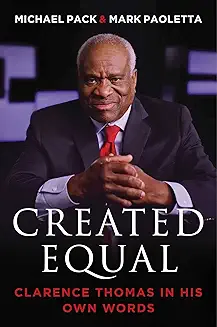An American Originalist
In the Introduction, Paoletta rightly calls Thomas an American hero and our greatest Supreme Court Justice, and these pages detail the experience and thinking that formed so remarkable a judge. Remarkable, but also exemplary—both because Thomas believes that the Constitution’s central guarantee of liberty depends on the citizenry’s personal qualities of self-reliance and self-restraint, traits for which he is a poster child, and also because his own rise from poverty in the segregated Deep South to the High Bench illustrates the opportunity for self-development that liberty makes possible for Americans, both black and white. In particular, as he emphasizes in this volume, his story suggests what a different fate black America might have had if bad cultural developments and bad social policy, abetted by the Court, had not proved destructive to so many and led them to self-sabotage. Continue reading




